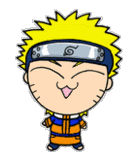 The history of the Pokémon media franchise spans over a decade from when work began officially on the first game to now, and has roots even older. It started simply enough as a hobby of Satoshi Tajiri, who as a child had a fondness for catching insects and tadpoles near his home in suburban Tokyo. Over time, Tajiri decided to put his idea of catching creatures into practice because it would give children the same thrill as he had.
The history of the Pokémon media franchise spans over a decade from when work began officially on the first game to now, and has roots even older. It started simply enough as a hobby of Satoshi Tajiri, who as a child had a fondness for catching insects and tadpoles near his home in suburban Tokyo. Over time, Tajiri decided to put his idea of catching creatures into practice because it would give children the same thrill as he had. With the help of Ken Sugimori and other friends, Tajiri formed Game Freak and much later the design studio known as Creatures. In 1975, the precursor to Pokémon was serialized in manga form as Capsule Monsters. However, the manga was unsuccessful and was discontinued. In 1991, Tajiri discovered the Game Boy and the Game Boy Link Cable gave him the image of insects traveling along the wire. After several failed attempts at pitching Capsule Monsters to Nintendo, Tajiri's new friend Shigeru Miyamoto pitched it to the company, and Nintendo began to fund the project, spending six years developing the games that would become a worldwide sensation. The original artwork for the games was drawn by Tajiri's friend, the artist Ken Sugimori. Before the first Pokémon games were released in Japan in 1996, sprites of Pikachu, Mew, Meowth, Bulbasaur, Charmander and Squirtle appeared in Game Freak's Game Boy Camera in 1995. Around this time, Nintendo decided to change the name "Capsule Monsters" to "Pocket Monsters."
The first Pokémon games, Pokémon Red and Green Versions,
 came to the Nintendo Game Boy system in Japan on February 27th, 1996, which was the fulfillment of Satoshi Tajiri's dream and allowed people of all ages to catch, train and trade 151 creatures and become a Pokémon Master. Due to high sales, Pokémon Red and Green were swiftly followed up with Pokémon Blue, which had improved graphics and sounds. After the games, a Pokémon Trading Card Game was developed by Media Factory with its own set of rules. The first set of cards was released on October 20th, 1996, containing 102 cards, and became very popular. The popularity of the franchise also led to an anime series based on the games, premiering in Japan on April 1st, 1997.
came to the Nintendo Game Boy system in Japan on February 27th, 1996, which was the fulfillment of Satoshi Tajiri's dream and allowed people of all ages to catch, train and trade 151 creatures and become a Pokémon Master. Due to high sales, Pokémon Red and Green were swiftly followed up with Pokémon Blue, which had improved graphics and sounds. After the games, a Pokémon Trading Card Game was developed by Media Factory with its own set of rules. The first set of cards was released on October 20th, 1996, containing 102 cards, and became very popular. The popularity of the franchise also led to an anime series based on the games, premiering in Japan on April 1st, 1997.Summary
Main Characters







No comments:
Post a Comment